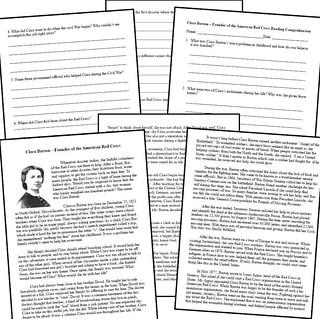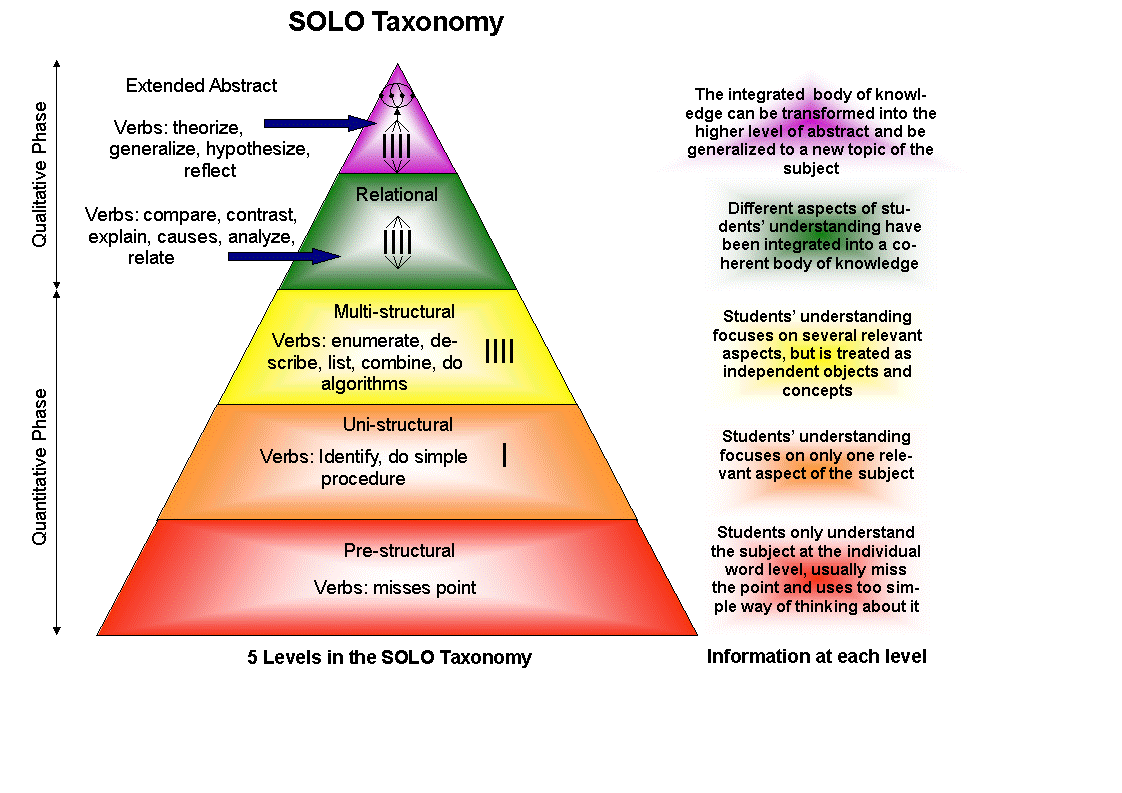Dear all,
It’s been a tough couple of weeks and your support and
professionalism throughout has been very much appreciated. I know that there
was no food for thought last week but that was because I was frying my brain
listening to a true pedagogical guru paint a picture for our constructivist future.
These articles and links originate from this thinking and are this week’s Food
for Thought.
· Beyond Worksheets, A True Expression of Student Learning

We live in a world where we are constantly connected to
information. This vast ocean of information, the best knowledge of mankind —
almost all of it — can be accessed at any time in just seconds. But simply
being able to access information is not all that impressive. It in no way means
that we can understand the information, evaluate it, or grasp its implications.
Possession of facts is not learning. What is an important skill is the ability to sift through
abundant information, identify what is valid and meaningful, then use it to
create meaning and express it. This is why student creation is so important in
the new economy of information.
Jason Dvorak,
who was teaching a unit on “Sensation and Perception” in his high school
psychology class, had planned to first lecture, then have his students evaluate
visual examples that he created to represent each concept from the lesson. They
would then decide as a group which concept they represented. But Dvorak’s
classes had just been given iPads as part of a pilot program, and because the
school’s emphasis was on student creation and making use of these tools, he
knew that he had to reconstruct the lesson. In the new iteration, the students
were tasked with research and the creation of their own unique visual
representations of those key concepts. Once the images were complete, the
students reviewed and evaluated them as a class, discussing the strengths and
weaknesses of each and suggesting ways to improve them. Throughout the
lesson, Dvorak monitored the discussion, adding nuanced detail and keeping
the focus of the discussion on the ultimate learning objective, but the real
work was done by the students.
More
often than not, the memorable assignment was one that allowed them to build and
create.
This constructivist approach, as outlined by Dennis Jonassen in
his 8
Characteristics of Constructivist Learning, values hands-on and
experiential learning that allows students to create multiple representations
of ideas. The variety of examples that they create prevents oversimplification
and allows students to address topics in their complexity. The emphasis on constructing
knowledge, rather than reproducing it, is not only effective at revealing
comprehension, but also the misapplication of concepts and ideas. In Dvorak’s
class, the examples were not without their flaws. Dvorak used this reality
to have a discussion that evaluated and identified the strengths — and just as
importantly — the weaknesses of their work. In many cases, that happened
without the teacher having to point out the misapplication since students were
able to evaluate and give feedback during the discussion.In the past, these types of activities were not entirely foreign to classrooms. The regularity with which they take place, the power of the creation tools available to students, and our ability to share these creations is what has changed today. The increasingly available classroom technology and the growth of student 1:1 initiatives means that students not only have access to abundant knowledge, but also the ability to create and express their learning in powerful and creative ways. Today, student “expressions of learning” can take the form of videos, podcasts, songs, and a limitless number of dynamic and interactive presentation formats. Many of these opportunities transform learning from a presentation of information to the creation of art.
Far beyond filling out answers on a worksheet, these assignments allow for individual talents and personality to shine through. While it’s unlikely that you have ever heard a person say, “that worksheet changed my life,” most people have an assignment from their childhood that they remember with pride because it was meaningful to them. More often than not, that memorable assignment was one that allowed them to build and create.
Perhaps the most important effect of the new economy of information is the need to make sense of information that is around us. “In order to do this, students need to literally create their learning and demonstrate not just what they know, but what they can do.”
·
SOLO TAXONOMY
Here is new direction that Paul Ginnis introduced to us at
his workshop and aligns perfectly with a constructivist approach to teaching.
Bloom’s
Taxonomy is without a doubt the most often used taxonomy for educational
outcomes, but in many ways the SOLO taxonomy of Biggs & Collis (1982)
represents a more useful tool for assessing the levels attained in students’
work. SOLO stands for Structure of the Observed Learning Outcome. The taxonomy enables teachers to assess students’ work in terms of its quality not in terms of what they got right and got wrong. There are five levels, rising in complexity and competence. At the lowest level, (pre-structural), students miss the point entirely. At the next level (unistructural), students are able to identify only one aspect of a topic, At the third level (multistructural) students are able to identify several aspects but they are unrelated. At the fourth level (relational) students can integrate different ideas into a whole. Finally, at the highest level (extended abstract), students are able to generalise and hypothesise.
What I find particularly useful about this approach is that it looks at the work students produce in ways which are intuitive and easy to understand. This makes it a usable framework. One of the problems with Bloom’s taxonomy is that it focuses on behaviours which are often hard to discern. How does one know when a response reflects analysis rather than knowledge, or synthesis rather than comprehension? Anyone who has ever tried to differentiate between elements of a student’s response will understand what I mean. This is compounded by the fact that few students ever attain any ability to display the higher order thinking skills. Perhaps this only really happens at post-graduate level. Many students are, however, capable of multi-structural or relational thought, and some of abstracting to new situations or contexts.
The taxonomy is more relevant for high school, and less tainted with the charge of being Behaviourist. SOLO was designed within a Constructivist framework. And this is where its usefulness really comes to the fore – as a tool for helping students think about their own thinking and how to make it more complex, using simple rubrics.
There’s a level at which everyone can understand the phrase, “You’ve used several ideas, but you haven’t made connections between them to make an argument” while telling a student that they have analysed but not synthesised is pretty meaningless for all concerned. Teacher and student can then focus on particular thinking skills to help progress to the next level.
http://digiteacher.wordpress.com/
·
And last but not least here is a link to a
fantastic site about SOLO taxonomy that I discovered through the above blog
whilst deepening my understanding of SOLO taxonomy.
“Learning to learn” requires the learner to think about the
strengths and weaknesses of their own thinking when they are learning and to
make thoughtful decisions on what to do next. Students of all ages can use SOLO
levels, rubrics and frameworks to answer the following questions:
- What
am I learning?
- How
is it going?
- What
do I do next?
HookED uses SOLO to help students think about the strengths
and weaknesses of their own thinking, to “learn to learn” and to help schools
develop a common, school wide approach to making learning and learning outcomes
visible to students. HookED uses SOLO to help schools develop a school-wide
understanding of:
1. The learning process (SOLO and the NZC Key Competencies);
2. The language of learning used in schools. (SOLO learning verbs);
3. Learning intentions and learning outcomes (SOLO differentiated learning experiences and WALT statements);
4. Self-Assessment of the learning process (SOLO differentiated student self-assessment rubrics);
5. Interventions (Thinking interventions and e-learning interventions) that enhance the conditions of value when learning (SOLO differentiated interventions).
2. The language of learning used in schools. (SOLO learning verbs);
3. Learning intentions and learning outcomes (SOLO differentiated learning experiences and WALT statements);
4. Self-Assessment of the learning process (SOLO differentiated student self-assessment rubrics);
5. Interventions (Thinking interventions and e-learning interventions) that enhance the conditions of value when learning (SOLO differentiated interventions).
SOLO is used to:
- Plan
for differentiation;
- Give
and receive feedback;
- Develop
self-assessment resources;
- Design
innovative curriculum;
- Reflect
on learning processes and products;
- Undertake
research and student led inquiry;
- Integrate
e-learning and thinking strategies;
- Establish
a school wide common language for learning.
Have a good weekend,
Yours
Adrian


Thank you Adrian for arranging the Paul Ginnis workshop. I'd never seen the SOLO taxonomy, but it's very useful. I especially liked the ideas for using primary source documents - his strategies make them come alive!
ReplyDelete